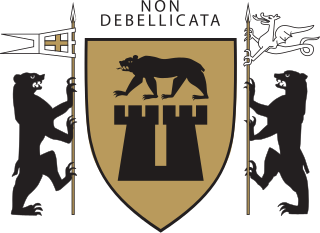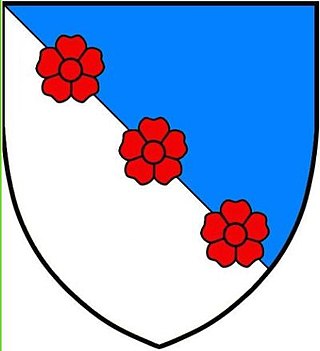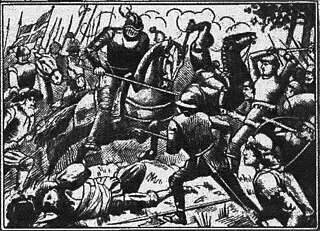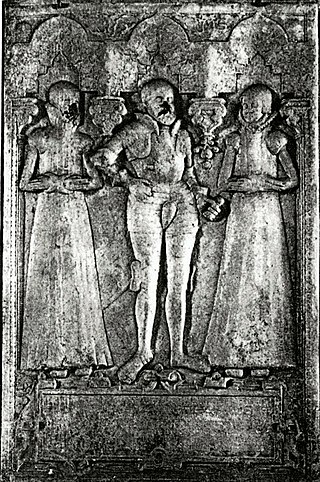
Karl Knutsson Bonde, also known as Charles VIII and called Charles I in Norwegian contexts, was King of Sweden and King of Norway (1449–1450).

Haakon V Magnusson was King of Norway from 1299 until 1319.

Akershus Fortress or Akershus Castle is a medieval castle in the Norwegian capital Oslo that was built to protect and provide a royal residence for the city. Since the Middle Ages the fortress has been the namesake and centre of the main fief and later main county of Akershus, which was originally one of Norway's four main regions and which included most of Eastern Norway. The fortress itself was located within the Akershus main county until 1919, and also within the smaller Akershus sub county until 1842.

The Sudreim claim was an entitlement to the throne of the Kingdom of Norway held among members of the powerful and influential House of Sudreim in the late Middle Ages.

Alv Erlingsson was a Norwegian nobleman, earl of Sarpsborg and governor of Borgarsyssel.

Sigurd Jonsson was a Norwegian nobleman, knight and the supreme leader of Norway during two interregnums in the mid-15th century.
Mette Iversdotter Dyre was a Danish noble, nominal sheriff and chancellor. She was married three times to powerful men: two royal councillors and finally Svante, Regent of Sweden. As such, she was a de facto queen consort. Mette Dyre is credited with political influence on the affairs of state through her spouse.

Henrich Krummedige, was born circa 1464 in Norway and died in 1530. He was a Danish-Norwegian nobleman and a member of both the Norwegian and Danish National Councils (Rigsråd) and played an extensive role in the politics of the era. He served as commanding officer of the Bohus Fortress in Norway from 1489 to 1503.
Knut Alvsson was a Norwegian nobleman and landowner. He was the country's foremost Norwegian-born noble in his time and served as fief-holder in southern-central Norway.

Alv Knutsson was a Norwegian nobleman who descended on his father's side from the influential and wealthy Swedish Tre Rosor noble family. He was a member of the Norwegian council of the realm and also served as commander of the royal castle in Bergen. Alv Knutsson is most famous for his involvement in the Krummedige-Tre Rosor feud. He was the father of the Norwegian rebel leader Knut Alvsson.
Hartvig Krummedige was a Danish nobleman who was born circa 1400 in southern Jutland, Denmark and died in 1476 at Akershus Fortress, Norway.
Hartvig Andreas Munthe was a Norwegian military officer, engineer and genealogist.

Görvel Fadersdotter (Sparre) was a Swedish noblewoman and county administrator. She was a major landowner in Denmark, Norway, and Sweden.

Carl Ferdinand Gjerdrum was a Norwegian jurist and resistance member.
Events in the year 1693 in Norway.
Events in the year 1739 in Norway.
Events in the year 1502 in Norway.
Hans Rev or Hans Reff was a Danish-Norwegian clergyman. He was the last Bishop of the Roman Catholic Diocese of Oslo before the Protestant Reformation, and later became the first Lutheran Superintendent of the Diocese of Oslo within the Church of Norway.

The Dano-Swedish War from 1501 to 1512 was a military conflict between Denmark and Sweden within the Kalmar Union.

Christen Munk was a Danish born, Governor-general of Norway and county governor.













